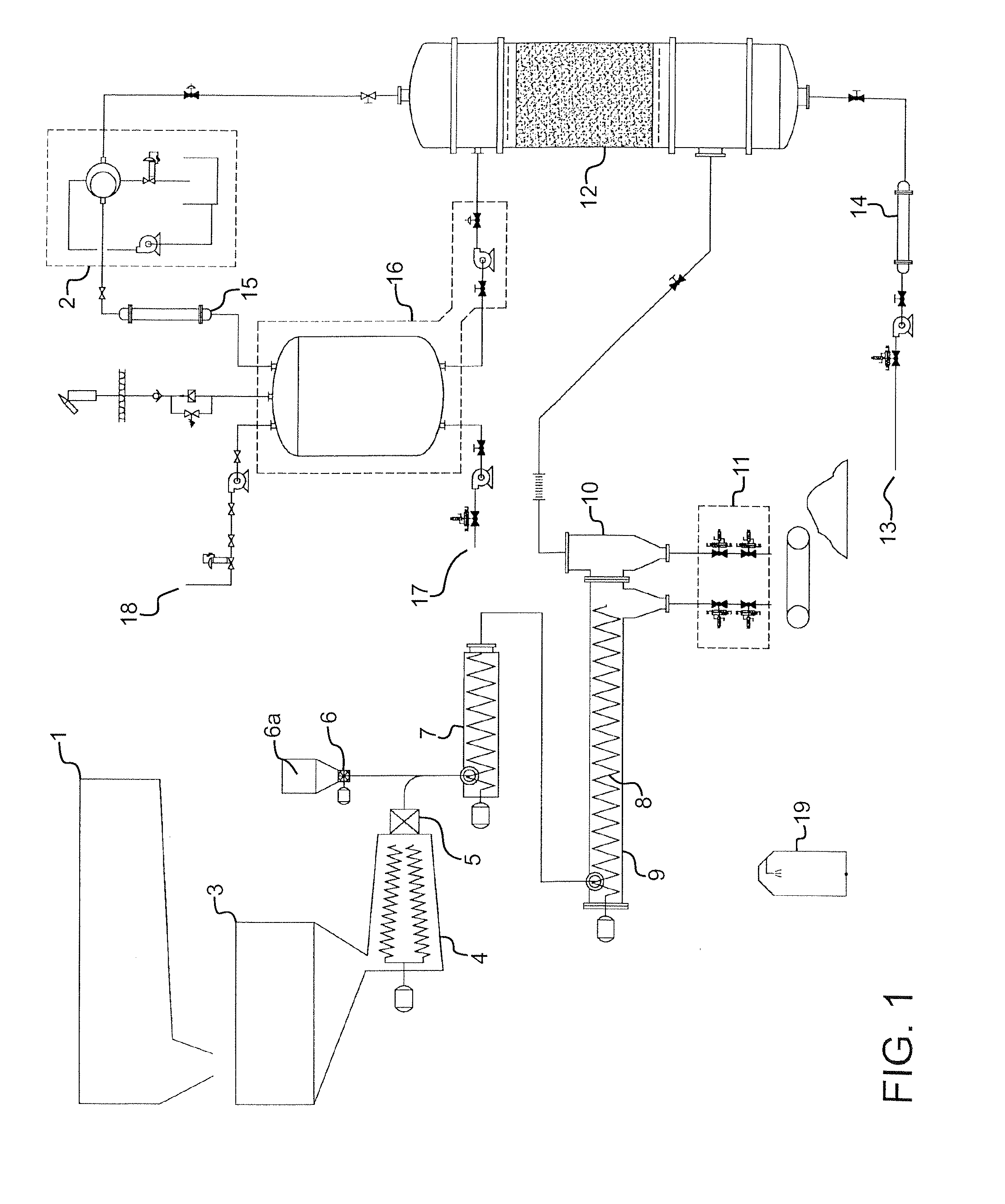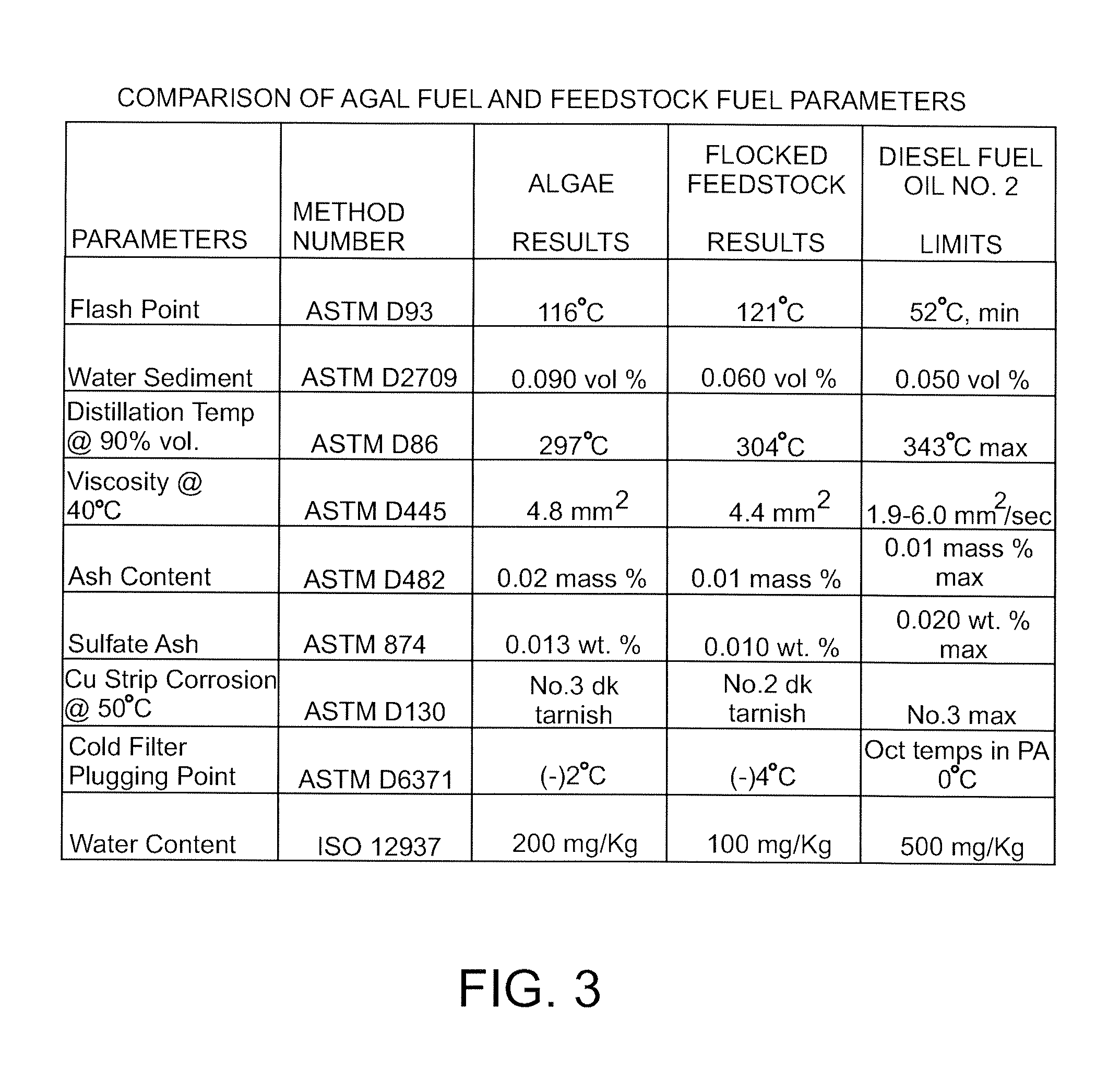Vacuum Pyrolytic Gasification And Liquefaction To Produce Liquid And Gaseous Fuels From Biomass
- Summary
- Abstract
- Description
- Claims
- Application Information
AI Technical Summary
Benefits of technology
Problems solved by technology
Method used
Image
Examples
working examples
Example 1
[0045]For this example, the feedstock was comprised of a 50 / 50 mix (by weight) of dried salt water algae and flocked wood comprising pine saw dust (⅜ in. particle size or less) and FOG (fats, oils, greases) in the form of yellow grease. The algae had a 40% lipid content largely comprising C16 and C18 fatty acid groups. The wood-FOG mixture contained (by weight) 60% wood and 40% FOG, with the latter containing heavy chains up to C46. This mixture was prepared by combining the saw dust with heated yellow grease in the feedstock preparation subsystem 1. Following dewatering, the excess grease was removed, leaving the flocked feedstock component with a 60% wood / 40% FOG weight ratio. Forty-five (45) pounds of the dried algae was combined with forty-five (45) pounds of the flocked wood-FOG mixture to produce 90 pounds of feedstock. The feedstock mixture had a water content of less than 5% water content and an energy content of 11,500-13,000 BTU per pound.
[0046]The consumable cat...
example 2
[0056]For this example, two feedstocks were run with the same catalyst. A first feedstock comprised 100% dried salt water algae. A second feedstock was comprised of a 25 / 75 mix (by weight) of dried salt water algae and flocked wood comprising 60% pine saw dust (⅜ in. particle size or less) and 40% FOG in the form of yellow grease. The flocked wood feedstock component was prepared in the same manner as example 1. Sixty (60) pounds of each feedstock was used. Thus, the first feedstock comprised sixty (60) pounds of algae and the second feedstock comprised thirty-six (36) pounds of saw dust and twenty-four (24) pounds of FOG.
[0057]The consumable catalyst used for this example was comprised (approximately) of 12% Kaolin, 28% zeolite, 28% silicon dioxide (amorphous), 28% aluminum oxide as Al(2)O(3), 2.5% aluminum phosphate and 1.5% rare earth elements. The amount of catalyst mixed with the 60 pounds of feedstock was 0.24 pounds. Thus, the catalyst content by weight was the same as in Exa...
PUM
| Property | Measurement | Unit |
|---|---|---|
| Length | aaaaa | aaaaa |
| Fraction | aaaaa | aaaaa |
| Fraction | aaaaa | aaaaa |
Abstract
Description
Claims
Application Information
 Login to View More
Login to View More - R&D
- Intellectual Property
- Life Sciences
- Materials
- Tech Scout
- Unparalleled Data Quality
- Higher Quality Content
- 60% Fewer Hallucinations
Browse by: Latest US Patents, China's latest patents, Technical Efficacy Thesaurus, Application Domain, Technology Topic, Popular Technical Reports.
© 2025 PatSnap. All rights reserved.Legal|Privacy policy|Modern Slavery Act Transparency Statement|Sitemap|About US| Contact US: help@patsnap.com



